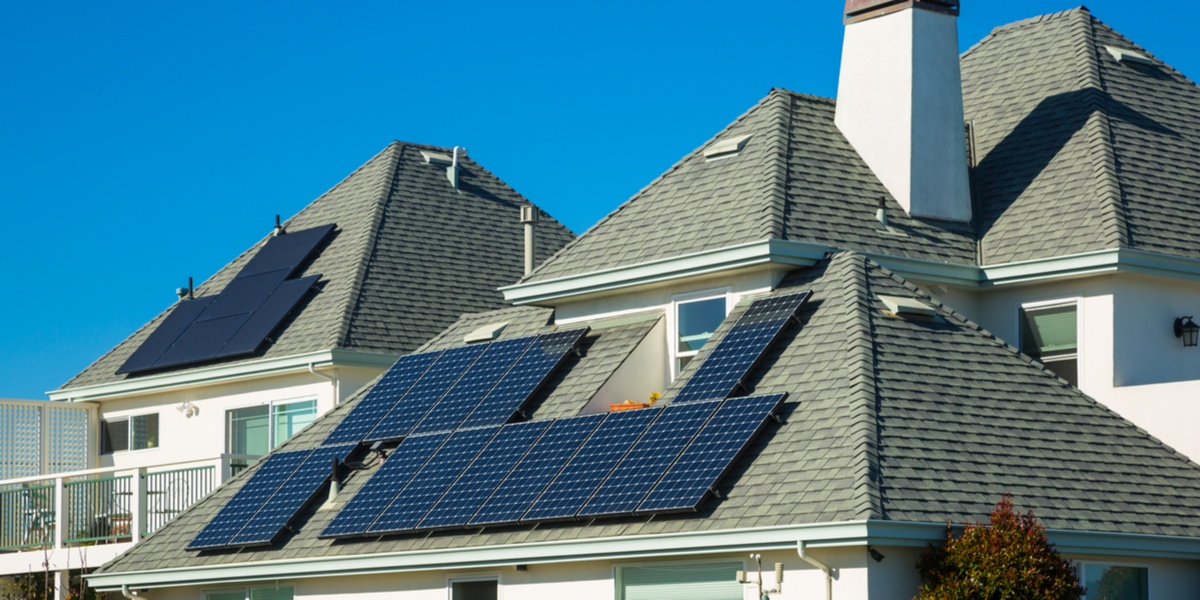Using Solar Energy in New York City Buildings

New York City is not particularly sunny, but its buildings consume a lot of energy as fuel and electricity. Therefore, any building upgrades that reduce energy footprint are welcome, and solar radiation has the advantage of being a free resource. There are many ways to harness the power of the sun in buildings, and this brings the added benefit of reducing greenhouse gas emissions. Keep in mind that the state of New York has an ambitious target of generating 50% of its energy from renewable sources by 2030, while at the same time NYC aims for an 80% reduction in emissions by 2050.
There are four main ways in which a building can use sunlight to meet its energy needs, and this article will provide an overview of each:
- Electricity generation with solar photovoltaic panels.
- Domestic hot water with solar thermal collectors.
- Lighting and space heating, by optimizing window positioning.
To achieve the best results, the use of solar energy should be complemented with energy efficiency measures. A high-performance building not only uses renewable sources, it also ensures that energy waste is kept to a minimum.
Have your building energy expenses increased over time?
Get a professional energy audit for your property.
Solar Photovoltaic Systems in NYC
The working principle of a photovoltaic system is very simple: it receives sunlight and converts it to electricity, using semiconductor materials that produce a flow of electrons when struck by light particles (photons). New York City might not be the sunniest city, but its electricity is very expensive, exceeding 20 cents per kilowatt-hour under many tariffs. As a result, buildings can achieve significant savings by generating their own electricity.
According to the National Renewable Energy Laboratory (NREL) the average installed cost of solar power is $2.85/W in the residential sector, $1.85/W in the commercial sector, and $1.03/W in the utility sector. The upfront investment associated with a solar PV system can be high, but consider that solar panels have a service life of more than two decades and very simple maintenance needs. In addition, the are massive incentives for solar panel installation in New York City:
- A rebate from the NY-Sun Incentive Program, which is managed by the NYSERDA (New York State Energy and Development Authority). The program manages separate funds for the residential, small business and large business sectors. Households below 80% of the median income are eligible for a double solar rebate.
- Four different tax benefits: Sales tax exemption, property tax exemption, state tax credit for 25% of the system cost up to $5,000, and a federal tax credit for 30% of the system cost (with no cap).
- Favorable net metering policy: If an installation up to 25 kW generates surplus electricity during a month, it is credited at full retail price on the next power bill. If there is a cumulative generation surplus after a year, it is credited at the wholesale kWh price.
These factors improve the financial viability of solar power in New York, reducing the ownership cost while increasing the monetary value of self-generated electricity. Just keep in mind that incentive programs are normally subject to budget and date limits - if you are considering solar power for a property in NYC, act fast so you don’t miss out. For example, the 30% federal tax credit only applies until the end of 2019, and the NY-Sun incentive per kW is being decreased gradually as the statewide solar capacity targets are met.
Solar photovoltaic systems could soon get a promising upgrade in the form of lithium-ion batteries. These solve the main issue with solar PV systems, which is the inability to deliver power when there is no sunlight. New York City already has an energy storage target of 100 megawatt-hours by 2020, and a statewide target will be determined in the first months of 2018.
Domestic Hot Water with Solar Thermal Collectors
Domestic hot water (DHW) systems represent another large energy expense in many NYC buildings. Most DHW systems operate with natural gas or heating oil, and in many cases they use indirect heat output from a space heating boiler. Electric DHW systems also exist, but they are less common in NYC due to the high kWh price. However, solar thermal collectors provide energy savings in either case.
The solar thermal collector model commonly used in rooftops uses a dark surface to absorb solar radiation. Water can be heated directly, but an antifreeze solution and heat exchanger may be required if the outdoor temperature is low enough to freeze potable water. The state of New York used to have an incentive program for solar thermal collectors, similar to the NY-Sun incentive for solar PV systems, but the program has been closed since 2015.
It is important to note that solar thermal collectors and photovoltaic panels compete for area, so installing one systems normally means having less space for the other. You can get a professional assessment of your energy consumption patterns to determine which system configuration works best.
If you want both solar heating and electricity, you can consider a high-efficiency heat pump to complement a photovoltaic system. With this setup, the electricity produced by a solar array can be used directly, or it can be used to run the heat pump and accumulate hot water in a tank for later use.
Daylighting and Space Heating with Sunlight
Sunlight can also be used for indoor lighting and space heating, but there are several important aspects to consider to make this work correctly.
- Indoor lighting can be turned off or dimmed in response to sunlight. However, consider that sunlight also cause glare then the sun itself is in direct line of sight, or reflected on a surface.
- Solar heat gain is beneficial during the winter, since it reduces the load on space heating equipment. However, the opposite effect occurs in the summer, when solar heat gain translates into more load for air conditioning systems.
In both cases described above, the solution is smart window placement. You will want to maximize the lighting effect all year long, while the heating effect is preferable only during the winter. An effective and simple solution is to use window shades: they block the sun during the summer, when it is higher in the sky, but not during the winter.

Ankit Javeri
Ankit is the Project Manager at NY Engineers, who holds an M.Tech. Some of his projects includes Community Access, Jackson Avenue
Join 15,000+ Fellow Architects and Contractors
Get expert engineering tips straight to your inbox. Subscribe to the NY Engineers Blog below.



